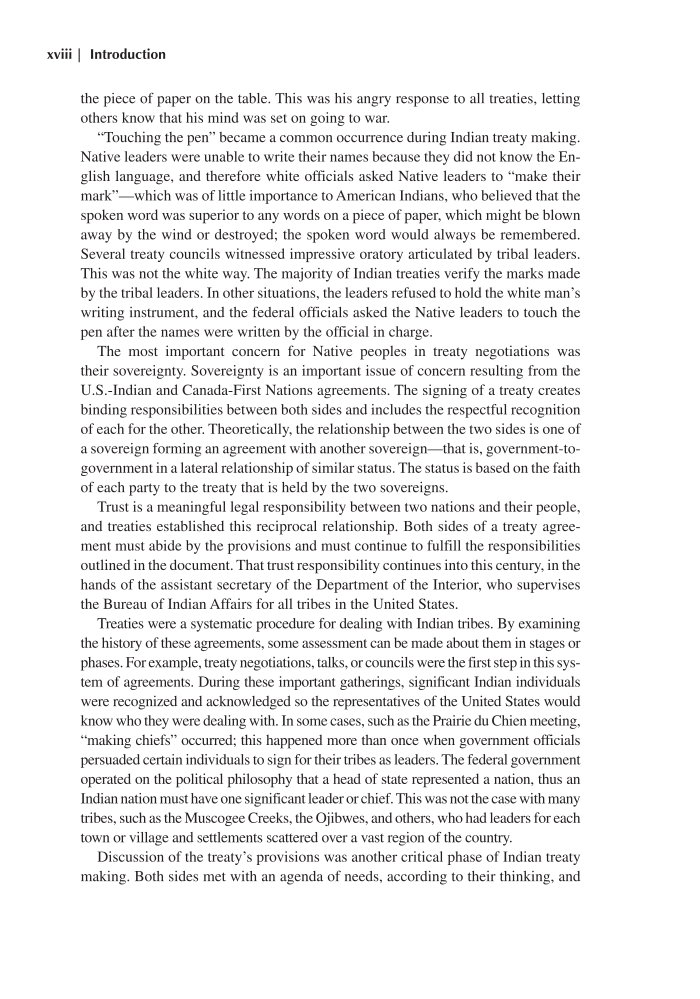xviii | Introduction the piece of paper on the table. This was his angry response to all treaties, letting others know that his mind was set on going to war. “Touching the pen” became a common occurrence during Indian treaty making. Native leaders were unable to write their names because they did not know the En- glish language, and therefore white officials asked Native leaders to “make their mark”—which was of little importance to American Indians, who believed that the spoken word was superior to any words on a piece of paper, which might be blown away by the wind or destroyed the spoken word would always be remembered. Several treaty councils witnessed impressive oratory articulated by tribal leaders. This was not the white way. The majority of Indian treaties verify the marks made by the tribal leaders. In other situations, the leaders refused to hold the white man’s writing instrument, and the federal officials asked the Native leaders to touch the pen after the names were written by the official in charge. The most important concern for Native peoples in treaty negotiations was their sovereignty. Sovereignty is an important issue of concern resulting from the U.S.‑Indian and Canada‑First Nations agreements. The signing of a treaty creates binding responsibilities between both sides and includes the respectful recognition of each for the other. Theoretically, the relationship between the two sides is one of a sovereign forming an agreement with another sovereign—that is, government-to- government in a lateral relationship of similar status. The status is based on the faith of each party to the treaty that is held by the two sovereigns. Trust is a meaningful legal responsibility between two nations and their people, and treaties established this reciprocal relationship. Both sides of a treaty agree- ment must abide by the provisions and must continue to fulfill the responsibilities outlined in the document. That trust responsibility continues into this century, in the hands of the assistant secretary of the Department of the Interior, who supervises the Bureau of Indian Affairs for all tribes in the United States. Treaties were a systematic procedure for dealing with Indian tribes. By examining the history of these agreements, some assessment can be made about them in stages or phases. For example, treaty negotiations, talks, or councils were the first step in this sys- tem of agreements. During these important gatherings, significant Indian individuals were recognized and acknowledged so the representatives of the United States would know who they were dealing with. In some cases, such as the Prairie du Chien meeting, “making chiefs” occurred this happened more than once when government officials persuaded certain individuals to sign for their tribes as leaders. The federal government operated on the political philosophy that a head of state represented a nation, thus an Indian nation must have one significant leader or chief. This was not the case with many tribes, such as the Muscogee Creeks, the Ojibwes, and others, who had leaders for each town or village and settlements scattered over a vast region of the country. Discussion of the treaty’s provisions was another critical phase of Indian treaty making. Both sides met with an agenda of needs, according to their thinking, and
Document Details My Account Print multiple pages
Print
You have printed 0 times in the last 24 hours.
Your print count will reset on at .
You may print 0 more time(s) before then.
You may print a maximum of 0 pages at a time.




























































































































































































































































































































































































































































